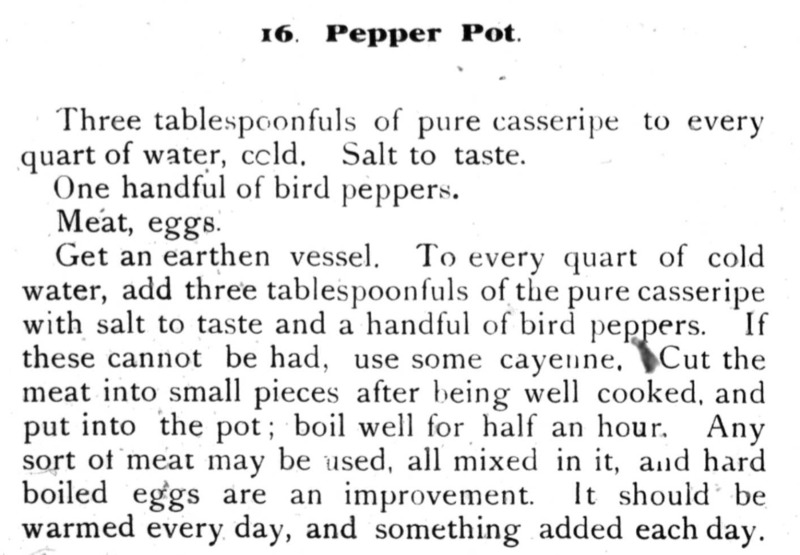What is Pepper Pot?
Pepper Pot is a traditional stew that has been prepared and eaten by indigenous peoples of the Caribbean for centuries. It was contained in a constantly heated pot that contained various meats and vegetables, preserved by the inclusion of a mixture of casseripe, which imparted a specific bittersweet taste to the evolving mix of ingredients. The stew was always handy for a quick and satiating meal, being taken from and added to on a daily basis. As meats and vegetables were eaten and added, the person responsible for managing the stew would continue to add a mixture of cassaripe and water to maintain its presence and effects in the changing dish.
The first written recipe for Pepper Pot appeared in Caroline Sullivan's Jamaica Cookery Book in the late nineteenth century and is included below.
In The Jamaican Cookery Book, Sullivan identifies the key ingredient in Pepper Pot to be a 3 tablespoon-to-1 quart mixture of casseripe to cold water. Beyond this preservative and flavorful mixture, the stew is made up of the addition of cooked meats and vegetables in small pieces, warmed and stirred daily, with the addition of new food items.
Making Do: A Caribbean Cultural Philosophy
In the article “Making Do”: Caribbean Foodways and the Economics of Postcolonial Literary Culture, author Lynn Marie Houston writes, "There are many examples of 'making do' in Caribbean food culture, such as dishes that call for 'whatever is on hand' or stews that call for animal parts that might otherwise be thrown away. 'Making do' is also evident in the use of a liquid extracted from a poisonous variety of cassava in order to make cassareep, a seasoning and preservative, and also a key ingredient in the famous, indigenous Caribbean dish known as pepper pot" (Houston 10).
You can read more of Houston's article on the philosophy of 'making do' through the link above and in the exhibit, 'Making Do' by Caitlin Provost.
